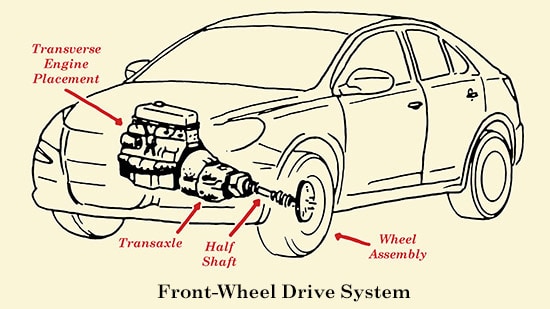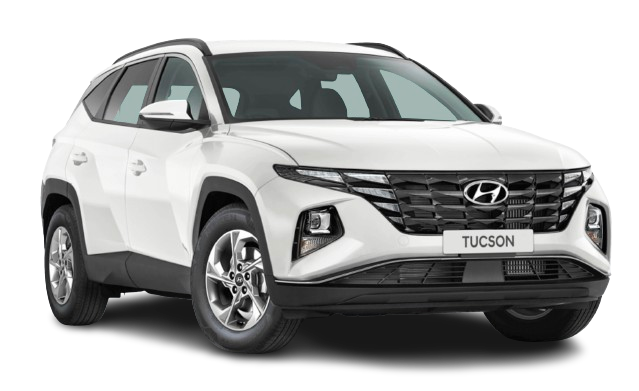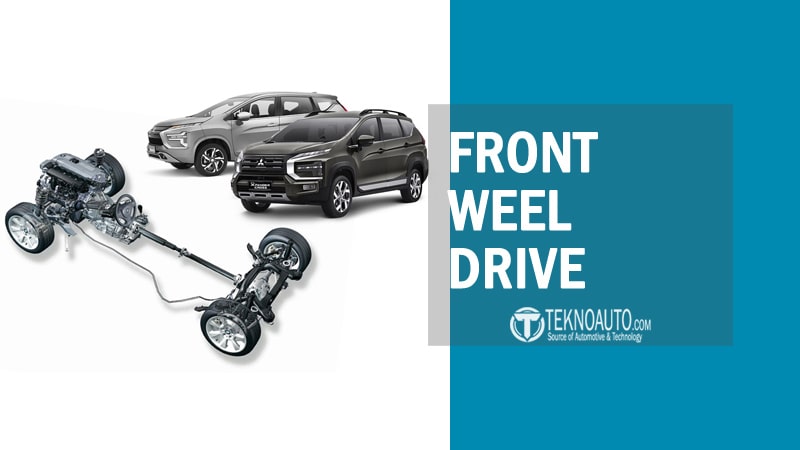In the evolving landscape of automotive engineering, the way power is delivered from an engine to the road has become a defining trait of vehicle performance, efficiency, and driving experience. Among the various drivetrain configurations available today, Front Wheel Drive (FWD) has emerged as the dominant choice for modern passenger cars. From compact hatchbacks to midsize family sedans and even some crossovers, the presence of FWD is not just common—it’s foundational to how these vehicles are built and behave.
This widespread adoption didn’t happen overnight. It reflects decades of innovation, shifting consumer demands, and a growing emphasis on cost-effectiveness, fuel economy, and space efficiency. FWD systems route engine power directly to the front wheels, resulting in a compact and lightweight drivetrain layout that offers a unique blend of practicality and performance.
But why has front wheel drive become the standard in so many vehicles? What makes it more advantageous than rear wheel drive or all-wheel drive in most everyday scenarios? And how exactly does it work beneath the surface?
What Is Front Wheel Drive?
Definition and Core Concept
At its core, Front Wheel Drive (FWD) is a drivetrain layout in which the engine’s power is transmitted directly to the front wheels of a vehicle. These powered front wheels are responsible not only for moving the vehicle forward but also for steering it—making FWD systems inherently compact, efficient, and space-saving.
In a typical FWD setup, the engine sits transversely (sideways) under the hood, directly connected to a transaxle—a combined transmission and differential unit. Power is sent through a pair of constant velocity (CV) joints to the front wheels. Because everything—from the engine to the drive axles—is concentrated at the front of the car, this configuration eliminates the need for a long driveshaft to the rear wheels. That’s why many FWD cars offer more interior room, especially in smaller vehicles.
This drivetrain concept simplifies both the vehicle’s architecture and manufacturing process. It reduces mechanical complexity and weight, leading to better fuel economy and lower production costs. It also improves traction on slippery surfaces, as the engine’s weight is positioned directly over the drive wheels—an advantage especially appreciated in rain, snow, or urban stop-and-go driving.
While the FWD layout is often associated with economy cars, it’s not limited to budget-conscious models. Many automakers rely on front wheel drive platforms for midsize sedans, crossovers, and even hybrids or electric vehicles—thanks to its inherent balance between practicality and performance.
A Brief History of Front Wheel Drive
Though it may seem like a modern invention, the concept of front wheel drive dates back more than a century. One of the earliest successful FWD cars was the 1911 Alvis, and by the 1920s and 1930s, European brands such as Citroën (with the revolutionary Traction Avant) and DKW were already exploring front-driven layouts. However, these early systems were often limited by mechanical complexity and unreliable components.
It wasn’t until the 1960s and 1970s that front wheel drive became more mainstream, particularly in compact and midsize vehicles. In the United States, the Oldsmobile Toronado (1966) was a major milestone, becoming the first American car to reintroduce front wheel drive in a mass-market format. Meanwhile, Japanese automakers such as Honda and Toyota embraced the layout for its cost-efficiency and user-friendliness, especially in urban environments.
The oil crises of the 1970s and rising fuel economy standards further accelerated the adoption of FWD. As automakers searched for ways to make lighter, more fuel-efficient cars, the benefits of a compact and weight-saving drivetrain became irresistible.
By the 1980s and 1990s, front wheel drive had become the default layout for most mainstream cars worldwide—a trend that still holds true today. Its proven reliability, packaging advantages, and consistent performance under everyday conditions have ensured its place in the foundation of modern automotive design.
How Front Wheel Drive Works

To understand how front wheel drive operates, it’s helpful to look at the key components that work together to channel engine power to the front wheels. Unlike rear wheel drive systems, which typically use a long driveshaft and rear differential, FWD systems are much more compact and integrated.
Here’s a breakdown of the main components involved:
- Engine (Typically Transverse Layout): In most FWD vehicles, the engine is mounted sideways (transversely) in the engine bay. This orientation allows for a direct connection between the engine and the transaxle without occupying extra space.
- Transaxle: This is a combination of the transmission and differential in one unit. It manages gear changes and distributes torque between the two front wheels.
- Clutch or Torque Converter: Depending on whether the vehicle has a manual or automatic transmission, this component connects or disconnects the engine from the transmission system.
- CV Joints (Constant Velocity Joints): These joints are located on either end of the drive axles. They allow the front wheels to receive consistent power, even while turning or moving over uneven surfaces.
- Drive Axles: Also known as half-shafts, these shafts transfer power from the transaxle to the front wheels. They flex and move with the suspension and steering to maintain a stable power connection.
This entire system works in unison to deliver power smoothly to the front wheels. When you press the accelerator, the engine sends rotational energy through the transaxle and CV joints to turn the front wheels. Meanwhile, the suspension and steering components adjust dynamically, ensuring you can accelerate and steer with precision—especially at lower speeds or during cornering in urban environments.
Because all power-related components are concentrated at the front, FWD systems allow for a flat rear floor in the cabin, offering more interior space and simplified assembly—one of the many reasons automakers favor it for economy and family cars.
Front Wheel Drive vs Rear Wheel Drive: Technical Comparison
While both FWD and RWD (Rear Wheel Drive) configurations achieve the same goal—propelling the car forward—their mechanical setups and resulting driving characteristics differ significantly.
| Feature | Front Wheel Drive (FWD) | Rear Wheel Drive (RWD) |
|---|---|---|
| Power Delivery | Front wheels | Rear wheels |
| Engine Placement | Front (transverse) | Front (longitudinal) |
| Traction on Slippery Roads | Better (weight over drive wheels) | Poorer (less weight on drive wheels) |
| Handling Dynamics | More understeer, less sporty | Better balance, more oversteer potential |
| Interior Space | More efficient layout | Driveshaft tunnel reduces space |
| Manufacturing Cost | Lower | Higher (additional components) |
| Maintenance | Easier, fewer parts | Can be more complex |
FWD systems excel in everyday driving scenarios. They offer better traction on wet, icy, or snowy roads due to the engine’s weight over the driven wheels. This makes them ideal for regions with variable climates or for drivers who prioritize safety and simplicity.
RWD systems, on the other hand, are often favored in performance cars, luxury sedans, and trucks due to their superior balance and dynamic handling. By separating steering (front wheels) from propulsion (rear wheels), RWD setups allow for better cornering feedback and weight distribution, especially at higher speeds.
However, the added components—like a driveshaft, rear differential, and more complex suspension—make RWD systems heavier and more expensive to produce and maintain.
In the end, the choice between FWD and RWD comes down to priorities: efficiency, practicality, and safety for FWD versus handling, power, and towing for RWD. That trade-off is what has helped FWD become the go-to configuration for the majority of personal vehicles on the road today.
Advantages of Front Wheel Drive
Fuel Efficiency and Lightweight Design
One of the most compelling advantages of front wheel drive lies in its contribution to fuel efficiency. Since FWD vehicles don’t require a long driveshaft, rear differential, or additional support structures for rear power delivery, the overall vehicle weight is significantly reduced. This lightweight design directly translates to better fuel economy, as the engine has less mass to move.
Additionally, the transverse engine layout typical of FWD cars allows for a more compact drivetrain package. This not only frees up cabin and cargo space but also reduces mechanical complexity. Fewer moving parts mean less internal friction, which further contributes to energy savings during operation.
In compact and midsize segments where fuel economy is a top priority, FWD remains a natural choice. It enables manufacturers to meet strict emissions standards while offering consumers vehicles that cost less to operate over time. For daily commuters, students, and families, these incremental savings at the pump add up quickly, making FWD vehicles both environmentally and economically sensible.
Better Traction in Wet or Snowy Conditions
Front wheel drive vehicles also offer superior traction in poor weather conditions, which is one reason they’re favored in regions that experience rain, ice, or snow. Because the engine is situated directly above the front wheels—the ones that drive the car forward—FWD vehicles benefit from increased downward force on those wheels. This added weight helps the tires maintain better contact with the road surface, reducing the likelihood of slippage.
In comparison, rear wheel drive cars can struggle under similar conditions. With less weight over the drive wheels in the rear, RWD vehicles are more prone to wheelspin and fishtailing, especially during acceleration on slick roads.
While all-wheel drive (AWD) systems provide even more traction by powering all four wheels, they come with added weight, fuel consumption, and cost. For many drivers, particularly those who don’t frequently encounter off-road or extreme winter conditions, FWD provides the ideal balance between safety, grip, and efficiency.
This enhanced traction is especially noticeable during uphill starts or quick turns on wet pavement. Combined with traction control and anti-lock braking systems (ABS), FWD cars offer reliable, predictable handling in everyday driving situations.
Cost-Effective Manufacturing and Maintenance
From the automaker’s perspective, front wheel drive is more cost-efficient to produce. Since all powertrain components—including the engine, transmission, and differential—are bundled together at the front, assembly lines can be more streamlined. There’s no need to build long underbody channels for driveshafts or mount complex rear suspensions for propulsion.
This also means lower material and labor costs, which often get passed down to the consumer in the form of a more affordable vehicle. For budget-conscious buyers, FWD models are usually priced lower than their RWD or AWD counterparts in the same class.
On the maintenance side, FWD systems are generally easier and cheaper to service. Fewer drivetrain parts mean fewer things can go wrong. And because the system is compact, mechanics can access components like the clutch, transaxle, or CV joints more easily—resulting in lower labor charges.
That said, some components like CV joints and boots do require occasional inspection, especially in older vehicles. But overall, the simplicity of the FWD layout leads to greater long-term reliability and reduced total cost of ownership. It’s a system designed not just for engineers, but for real-world practicality.
Disadvantages and Limitations of Front Wheel Drive
Handling and Performance Trade-offs
While front wheel drive offers many advantages in cost, traction, and efficiency, it also comes with certain compromises—particularly in the realm of vehicle handling and performance. One of the most notable drawbacks is a tendency toward understeer. This occurs when the front wheels—the same wheels responsible for both steering and driving the car—become overwhelmed during aggressive cornering, causing the vehicle to turn less sharply than the driver intends.
This is especially noticeable during high-speed driving or on tight, winding roads. Because both traction and steering loads are placed on the front tires, FWD vehicles can struggle to maintain grip in sharp turns, especially if throttle is applied mid-corner. In contrast, rear wheel drive (RWD) cars split the workload between front (steering) and rear (power), allowing for more balanced and dynamic handling.
FWD cars also suffer from a performance limitation known as torque steer, where the steering wheel pulls to one side under heavy acceleration—particularly in high-horsepower front-wheel-drive vehicles. This occurs when unequal torque is distributed to the front wheels, often due to design compromises in the transaxle or driveshaft lengths.
As a result, while FWD is excellent for daily commuting, urban driving, and fuel economy, it’s not typically the drivetrain of choice for high-performance sports cars, racing vehicles, or drivers who prioritize cornering dynamics and track-ready precision.
Limited Towing Capacity and Durability
Another limitation of front wheel drive systems is their relatively low towing capacity. Because the drive wheels are also the steering wheels, they are already under mechanical stress during normal driving. Adding the strain of towing a trailer or heavy load can exceed what the front axle is designed to handle.
Furthermore, since the weight of the trailer or towed object shifts to the rear of the vehicle, it reduces the traction available at the front wheels. This leads to poor acceleration, reduced stability, and increased wear on suspension and drivetrain components.
FWD vehicles also tend to have lower ground clearance and less robust drivetrains than trucks or SUVs with rear or four-wheel drive systems. They’re not built to handle off-road terrain, steep inclines, or continuous high-torque situations. For this reason, manufacturers generally advise against using FWD vehicles for towing anything beyond light-duty loads such as small utility trailers or bike racks.
In terms of durability, modern FWD systems are reliable for everyday use, but they may wear faster under intensive driving conditions. Components like CV joints, axles, and the transaxle may need servicing sooner in FWD cars that are routinely subjected to heavy loads or aggressive driving.
Why Front Wheel Drive Dominates Modern Cars
Industry Trends and Consumer Demand
The dominance of front wheel drive in today’s automotive market isn’t accidental—it’s the result of years of consumer preferences aligning with manufacturing trends. In an era where affordability, fuel economy, interior space, and ease of driving are top priorities, FWD delivers on all fronts.
For automakers, the appeal of FWD lies in its production efficiency. The simplicity of integrating the engine, transmission, and drivetrain into a compact front-mounted unit makes it easier and cheaper to build cars at scale. Assembly lines can be optimized, and fewer drivetrain components mean less weight, fewer failure points, and lower material costs.
For consumers, the benefits are felt directly in the driving experience. FWD vehicles are:
- Easier to control in city traffic
- More stable in wet or snowy conditions
- Typically offer better mileage
- More spacious in the cabin due to flat floors and compact drivetrains
This balance between comfort, reliability, and cost has made front wheel drive the default choice in many high-volume segments, including compact cars, midsize sedans, minivans, and even some crossover SUVs. The Toyota Corolla, Honda Civic, Hyundai Elantra, and Volkswagen Golf are just a few of the best-selling models built on FWD platforms.
Moreover, as urbanization increases globally, the demand for nimble, easy-to-park vehicles with lower emissions continues to rise—further reinforcing the position of FWD as the drivetrain of choice for the modern driver.
Front Wheel Drive in Electric and Hybrid Vehicles
With the automotive industry transitioning rapidly toward electrification, front wheel drive continues to play a critical role—even in this new technological landscape. Many electric and hybrid vehicles are designed with front-mounted motors, mirroring the compact efficiency of traditional FWD internal combustion cars.
Electric vehicles (EVs) like the Chevrolet Bolt, Nissan Leaf, and earlier models of the Hyundai Ioniq use front-mounted electric motors that directly drive the front wheels. This configuration simplifies the powertrain design and enables automakers to:
- Save space for batteries and cargo
- Lower production costs
- Retain predictable driving characteristics for new EV drivers
Hybrids like the Toyota Prius and Honda Insight also rely on FWD architectures, combining small gasoline engines with electric motors to power the front wheels efficiently.
Additionally, FWD allows for better integration of regenerative braking systems and electronic control units (ECUs) at the front axle—critical for the smart energy management in hybrid and electric powertrains.
While some high-performance or luxury EVs opt for rear-wheel or all-wheel drive for torque vectoring and acceleration, the majority of mass-market EVs remain front-wheel drive. This is largely because their buyers—similar to buyers of gas-powered FWD cars—are prioritizing efficiency, convenience, and affordability over performance.
As EV technology matures and modular platforms become more flexible, we may see more dual-motor AWD setups. But for the foreseeable future, FWD will continue to be a foundational layout in the global transition to electric mobility.
Common Vehicles That Use Front Wheel Drive
Popular Car Models with FWD
Front wheel drive (FWD) has become the drivetrain of choice for a wide variety of consumer vehicles across global markets. Its practical benefits—like improved fuel economy, better traction in wet conditions, and more efficient use of space—have made it especially common in vehicle segments where affordability and functionality are top priorities.
This section explores six major categories of vehicles where front wheel drive dominates. Each includes real-world examples from well-known automotive brands, along with a table summary to help visualize which manufacturers are committed to FWD platforms across their lineups.
Compact Sedans

Compact sedans are among the most common users of front wheel drive. These cars are designed for everyday commuting, fuel economy, and affordability—all of which align perfectly with the advantages of FWD systems. Most compact sedans feature transversely mounted engines, lightweight chassis, and simple drivetrains that prioritize ease of use and low maintenance.
Popular compact sedans with FWD:
- Toyota Corolla – A global bestseller known for its reliability and efficiency.
- Honda Civic – Combines sportiness with fuel efficiency and practical design.
- Hyundai Elantra – Offers advanced tech features with a budget-friendly price tag.
- Kia Forte – A value-oriented compact with modern styling and good fuel economy.
- Nissan Sentra – Known for comfortable driving and competitive pricing.
- Mazda3 Sedan – Offers a more premium feel while still using FWD in most trims.
Compact sedans are often favored by first-time car buyers, students, and urban drivers due to their maneuverability, low running costs, and space-efficient designs. Even performance-oriented trims in this class often retain FWD to maintain affordability.
Midsize Sedans

Midsize sedans traditionally offered rear wheel drive in the past, but over the last two decades, most mainstream models have transitioned to front wheel drive. This shift was largely driven by changing consumer preferences, with buyers prioritizing comfort, interior space, and fuel economy over sporty dynamics.
Popular midsize sedans with FWD:
- Toyota Camry – A best-seller in the U.S., offering smooth ride quality and hybrid options.
- Honda Accord – Balances performance with efficiency in a stylish, tech-savvy package.
- Hyundai Sonata – Modern design, strong warranty, and FWD-based hybrid variants.
- Kia K5 – Formerly known as the Optima, offering upscale features in a FWD layout.
- Nissan Altima – FWD in base trims; optional AWD in higher trims, highlighting flexibility.
While some luxury brands still offer RWD in their midsize sedans, mainstream automakers continue to favor FWD to lower production costs and meet strict fuel economy standards.
Hatchbacks
Hatchbacks benefit significantly from front wheel drive because it allows for a flat rear floor, maximized cargo space, and tight urban maneuverability. The compact layout of FWD systems makes hatchbacks more versatile—ideal for city living or weekend trips.
Popular hatchbacks with FWD:
- Volkswagen Golf – A European favorite with excellent handling and practical design.
- Mazda3 Hatchback – Combines sharp driving dynamics with elegant design.
- Honda Fit (Jazz in some markets) – Extremely spacious for its size, with flexible cargo options.
- Toyota Yaris – A small, efficient hatch with a reputation for reliability.
- Hyundai i20 / i30 – Common in Europe and Asia, offering FWD in all trims.
- Ford Focus (older gens in U.S.) – Popular compact hatch known for value and agility.
FWD helps keep hatchbacks light, responsive, and easy to park—perfect for urban or suburban environments.
Crossovers / SUVs

While larger SUVs often use AWD or RWD, compact and midsize crossovers frequently employ front wheel drive as their default configuration. These vehicles are built on unibody car platforms, essentially lifted sedans with more cargo space and road presence.
Popular crossovers and SUVs with FWD:
- Toyota RAV4 – Standard FWD with optional AWD; a leader in efficiency and practicality.
- Honda CR-V – Balanced performance and cargo room with FWD standard.
- Hyundai Tucson – Attractive styling, modern tech, and available hybrid trims.
- Kia Sportage – Refreshed design and smart interior space, based on a FWD platform.
- Nissan Rogue – Compact crossover with family-friendly features.
- Chevrolet Equinox – Offers FWD in base trims, AWD as an upgrade.
FWD in these vehicles is ideal for families, commuters, and weekend adventurers, delivering enough capability without the added complexity of AWD—unless needed for snow or dirt roads.
Minivans

Minivans are designed with family transportation and utility in mind. Front wheel drive allows minivans to have low floors, easy cabin access, and plenty of room for passengers and cargo without compromising ride comfort.
Popular minivans with FWD:
- Honda Odyssey – Known for its comfort, sliding doors, and child-friendly features.
- Chrysler Pacifica – Offers both gas-only and hybrid FWD versions.
- Toyota Sienna (pre-2021) – Older models were FWD; current versions use AWD hybrid layouts.
- Kia Carnival – A stylish minivan crossover that uses FWD in all trims.
FWD minivans are easier to maintain, lighter on fuel, and more agile in parking lots or tight spaces—essential traits for family-focused buyers.
Hybrid / Electric Cars

Most early hybrids and many mass-market electric vehicles (EVs) adopt front wheel drive because it simplifies power delivery, lowers drivetrain losses, and makes room for underfloor batteries.
Popular FWD hybrid and EV models:
- Toyota Prius – The original hybrid icon, built entirely on FWD architecture.
- Hyundai Ioniq Hybrid – Combines efficient hybrid tech with lightweight FWD layout.
- Honda Insight – A refined hybrid sedan with smooth power delivery.
- Chevrolet Bolt EV – Fully electric hatchback with front-mounted motor and FWD.
- Nissan Leaf – One of the world’s best-selling electric cars, featuring front wheel drive.
- Kia Niro EV/Hybrid – FWD across all variants, including Plug-in Hybrid, Hybrid Electric Vehicles, and Electric Vehicle.
As battery technology improves, more EVs are adopting AWD or RWD, but FWD remains dominant in the affordable EV and hybrid space, particularly for urban-focused vehicles.
Summary Table: Popular Front Wheel Drive Vehicles by Category
| Category | Popular Models | Brands |
|---|---|---|
| Compact Sedans | Corolla, Civic, Elantra, Forte, Sentra, Mazda3 | Toyota, Honda, Hyundai, Kia, Nissan, Mazda |
| Midsize Sedans | Camry, Accord, Sonata, K5, Altima | Toyota, Honda, Hyundai, Kia, Nissan |
| Hatchbacks | Golf, Mazda3 Hatch, Fit, Yaris, i20, Focus | VW, Mazda, Honda, Toyota, Hyundai, Ford |
| Crossovers/SUVs | RAV4, CR-V, Tucson, Sportage, Rogue, Equinox | Toyota, Honda, Hyundai, Kia, Nissan, Chevrolet |
| Minivans | Odyssey, Pacifica, Sienna (older), Carnival | Honda, Chrysler, Toyota, Kia |
| Hybrid/EVs | Prius, Ioniq, Insight, Bolt EV, Leaf, Niro | Toyota, Hyundai, Honda, Chevrolet, Nissan, Kia |
FWD has enabled automakers to build cars that are practical, space-efficient, affordable, and easy to drive, which is why it’s used across so many categories—from compact sedans to electric vehicles. Whether it’s your first car or your daily commuter, chances are it’s driven by the front wheels.
How to Identify If Your Car Is Front Wheel Drive
If you’re like many drivers, you probably get in your car every day without thinking much about how power is transferred from the engine to the wheels. But understanding whether your car uses front wheel drive (FWD) can actually have a significant impact on how you drive it, how you maintain it, and what kind of road conditions it’s best suited for.
Fortunately, identifying a front wheel drive vehicle doesn’t require a degree in mechanical engineering—or even crawling underneath your car. With a few simple observations and checks, you can determine your car’s drivetrain layout confidently and quickly.
Check the Owner’s Manual or Manufacturer Website
The most straightforward method is also the most often overlooked: simply consult your vehicle’s owner’s manual. Automakers include basic specifications like engine type, transmission, drivetrain, and tire size right in the manual. Look for keywords like:
- “FWD” or “Front Wheel Drive”
- “Transaxle” (a strong indicator of FWD)
- “Drivetrain configuration”
If you’ve misplaced the manual, don’t worry. Most manufacturers now host digital versions of manuals on their official websites. You can search by make, model, and year to access complete specs—including the drivetrain layout. Some automakers even include virtual brochures and spec sheets with detailed drivetrain illustrations.
This method is especially helpful if your vehicle has multiple drivetrain options depending on trim. For example, some vehicles are FWD by default but offer AWD as an upgrade. Your trim level determines which system you actually have.
Observe the Engine Orientation
Once you pop the hood, there are clues right in front of you—literally. One of the easiest visual indicators of a front wheel drive vehicle is the orientation of the engine.
Most FWD vehicles use a transverse engine layout, where the engine is mounted sideways across the engine bay. You’ll typically see:
- Belts, pulleys, and the serpentine system on one side (often passenger side)
- The air intake and exhaust on the opposite side
This design helps manufacturers save space and shorten the path between the engine and the driven wheels (which are right below the engine). It’s a hallmark of modern FWD architecture, especially in compact and midsize cars.
In contrast, rear wheel drive vehicles often use longitudinal engine layouts, where the engine is mounted front-to-back. This allows for a straight connection to the rear differential via a driveshaft. If you open your hood and see the engine aligned with the car’s length, it might not be FWD.
Look Underneath the Vehicle
If you’re willing to take a quick peek under your car—but don’t want to get dirty—stand back and visually inspect the underbody from the side. In front wheel drive cars, you typically won’t see:
- A long driveshaft running the length of the vehicle
- A rear differential or solid rear axle (unless the car has AWD)
Instead, the underbody will appear relatively flat and uncluttered, especially toward the rear. This is because all the power delivery takes place up front, and there’s no need to send torque to the rear wheels.
In contrast, if you see a tube-like driveshaft connecting the front transmission to the rear axle, you’re likely looking at a rear wheel or all-wheel drive system.
Also, take note of the suspension layout. Independent rear suspensions are more common in FWD vehicles, which lack a solid axle in the rear.
Evaluate Driving Feel and Road Behavior
Even without opening the hood or reading a manual, you can sometimes feel the difference behind the wheel. Front wheel drive cars have a few distinct characteristics in how they behave on the road:
- Understeer: In sharp or fast corners, a FWD vehicle may resist turning more than you expect. This is because the front wheels are handling both steering and power delivery, which can overwhelm them under pressure.
- Improved traction in slippery conditions: FWD vehicles often feel more stable during takeoff on wet, snowy, or icy roads, thanks to the added weight of the engine over the drive wheels.
- Tighter turning radius at low speeds: Since power is delivered right at the steering wheels, FWD vehicles are often easier to maneuver in parking lots and tight urban streets.
While these sensations are subtle, experienced drivers can often detect the difference between front wheel and rear wheel drive through handling dynamics alone.
Ask a Mechanic or Use a VIN Decoder Tool
If you’re still unsure—or simply want to confirm with certainty—your local mechanic can usually tell you within seconds whether your vehicle is front wheel drive. All it takes is a glance underneath or a review of basic drivetrain specs.
Alternatively, you can use your Vehicle Identification Number (VIN) to get the answer yourself. The VIN is a 17-character code located:
- On the dashboard near the windshield (driver’s side)
- Inside the driver’s side door frame
- On your insurance documents or registration
Once you have your VIN, enter it into an online VIN decoder or the manufacturer’s website. You’ll get a full list of specifications, including drivetrain layout, engine size, trim level, and more. This method is especially useful for secondhand car buyers or when dealing with models that offer multiple drivetrain configurations.
Why This Information Matters
Knowing whether your vehicle uses front wheel drive is more than just a trivia fact—it’s knowledge that empowers you as a driver. Here’s why it matters:
- Maintenance & Repairs: FWD vehicles often have simpler drivetrains and lower maintenance costs. Understanding your layout helps avoid confusion at the mechanic and ensures proper part replacement (e.g., CV joints vs. driveshafts).
- Driving Technique: In snow, rain, or gravel, knowing your car is FWD helps you anticipate how it will respond to acceleration, cornering, or braking.
- Vehicle Upgrades: If you’re modifying your vehicle or towing a trailer, drivetrain knowledge is critical for safety and performance planning.
- Resale Value & Comparison: When shopping for a new car or selling your own, drivetrain layout is a key consideration for buyers—especially in regions with variable weather.
Front Wheel Drive vs Other Drivetrain Systems
FWD vs RWD vs AWD vs 4WD

As vehicle buyers become more informed and technology continues to evolve, understanding the differences between drivetrain systems becomes essential to making the right choice. Each system—Front Wheel Drive (FWD), Rear Wheel Drive (RWD), All-Wheel Drive (AWD), and Four-Wheel Drive (4WD)—has strengths and weaknesses depending on the driving environment and intended vehicle use.
Below is a comparative overview of the key characteristics:
| Feature | FWD | RWD | AWD | 4WD |
|---|---|---|---|---|
| Power Delivered To | Front wheels | Rear wheels | All wheels (auto-adjust) | All wheels (manual or automatic) |
| Best For | City, daily commuting | Performance, towing | All-weather traction | Off-road, rugged terrain |
| Fuel Efficiency | High | Moderate | Moderate to low | Low |
| Handling | Understeer in hard turns | Better balance, oversteer | Neutral | Depends on system |
| Traction in Snow/Wet | Good | Poor | Excellent | Excellent |
| Towing Capability | Limited | Strong | Moderate | Strong |
| Cost | Low | Moderate | Higher | Higher |
| Complexity & Maintenance | Simple, low cost | Moderate | Complex, higher maintenance | Complex, higher maintenance |
Where Front Wheel Drive Excels
FWD is optimized for urban driving, fuel economy, and cost-effectiveness. It’s perfect for the average commuter or family driver who wants predictable performance in varied conditions without sacrificing space or economy. FWD also offers an advantage when combined with electronic driver-assist systems like ABS (Anti-lock Braking System) and traction control, both of which act directly on the front wheels in most vehicles.
This section also opens the opportunity to integrate internal references across teknoauto.com, for readers who want to dive deeper into specific technologies that complement FWD systems:
- For example, when discussing how traction control and electronic stability systems enhance front wheel drive performance, we could link to a relevant article on input devices (sensors detecting wheel slip).
- Similarly, processing devices like ECUs interpret those signals and optimize braking or throttle response.
- FWD systems often benefit from lightweight peripheral devices such as wheel speed sensors, CV boot sensors, and shift-by-wire modules, which improve control and efficiency.
- Meanwhile, output devices like actuator motors and dashboard alerts provide feedback to the driver, enhancing overall responsiveness and safety.
Limitations Compared to AWD and 4WD
Though FWD covers most daily driving needs, it falls short in performance driving, off-roading, or heavy-duty towing—where AWD and 4WD systems thrive. AWD vehicles use advanced differentials and sensors to distribute torque dynamically between all four wheels, offering superior grip on slippery roads or during sudden maneuvers.
4WD systems, on the other hand, are typically reserved for trucks and SUVs designed to handle rugged terrain, steep climbs, or deep snow. These systems often include low-range gearing and locking differentials, making them ideal for adventurers or professionals who frequently drive off-road.
However, the added weight, mechanical complexity, and lower fuel economy of AWD/4WD systems can be overkill for the average commuter. That’s why FWD remains the pragmatic choice for mass-market vehicles, offering a cleaner balance between efficiency and performance.
Conclusion
From its compact engineering roots to its widespread use in today’s most popular vehicles, front wheel drive has earned its place as the default drivetrain for modern automotive design. Its combination of efficiency, traction, space optimization, and affordability makes it the ideal choice for millions of drivers around the world—particularly those navigating urban roads, unpredictable weather, or fuel-conscious lifestyles.
While it may not offer the dynamic flair of rear wheel drive or the versatility of all-wheel drive, FWD continues to evolve through technological innovation, including smarter software integration, advanced torque distribution, and compatibility with hybrid and electric platforms. These advancements ensure that FWD won’t just remain relevant—it will continue to lead the way in sustainable and intelligent vehicle design.
Whether you’re behind the wheel of a compact sedan, a family crossover, or the latest electric hatchback, understanding how front wheel drive works—and why it matters—can help you better appreciate the design choices that shape your driving experience.
FAQ About Front Wheel Drive (FWD)
What is the difference between front wheel drive and rear wheel drive?
Front wheel drive (FWD) powers the front wheels, offering better traction in slippery conditions and improved fuel efficiency. Rear wheel drive (RWD) powers the rear wheels, typically providing better handling and towing capacity but less traction in snow or rain.
Is front wheel drive good in snow?
Yes. FWD vehicles perform well in snowy or wet conditions because the weight of the engine is positioned over the drive wheels, improving traction and stability.
Do front wheel drive cars handle better than all-wheel drive cars?
Not necessarily. FWD cars are more efficient and predictable in normal conditions, but AWD systems provide superior grip and control in challenging environments like snow, gravel, or mud.
Which vehicles are most commonly front wheel drive?
Compact and midsize cars such as the Toyota Corolla, Honda Civic, Hyundai Elantra, and many crossovers like the Honda CR-V and Nissan Rogue are typically front wheel drive.
Is front wheel drive better for fuel economy?
Yes. FWD systems are lighter and mechanically simpler, which reduces energy loss and improves fuel efficiency compared to RWD or AWD systems.




